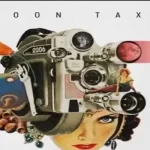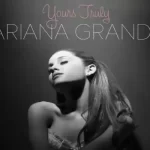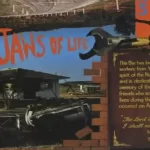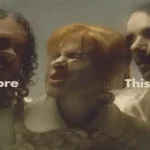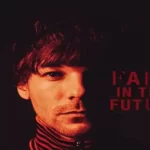what is Synth-pop music?
Synth-pop, short for synthesizer pop or techno-pop, emerged in the late 1970s. It prominently features the synthesizer as the primary musical instrument, defining its unique sound within the music genre.
Origins of Synth-Pop
The roots of synth-pop can be traced back to the experimental use of synthesizers in the late 1960s and early 1970s. Pioneering bands like Kraftwerk and Giorgio Moroder laid the foundation for the genre, introducing electronic elements to popular music. As technology advanced, synthesizers became more accessible, allowing musicians to explore new sonic landscapes.
Characteristics of Synth-Pop
Synth-pop is defined by its distinctive sound, characterized by the use of synthesizers as the primary instrument. It often features upbeat, danceable rhythms, catchy melodies, and lyrics that range from introspective to lighthearted. The genre’s use of electronic instruments marked a departure from traditional rock and pop sounds, contributing to its unique and futuristic appeal.
Evolution of Synth-Pop
Throughout the 1980s and 1990s, synth-pop continued to evolve, incorporating influences from various genres such as post-punk, new wave, and electronic dance music. Artists like Depeche Mode, New Order, and Pet Shop Boys further shaped the genre, pushing its boundaries and expanding its reach. The 21st century witnessed a resurgence of interest in synth-pop, with contemporary artists incorporating nostalgic elements into their music.
What is the difference between synth-pop and electronic pop?
Synth-pop and electronic pop (or electropop) are related genres that share similarities but also have distinct characteristics. Here’s a table summarizing the key differences between synth-pop and electronic pop:
| Feature | Synth-Pop | Electronic Pop (Electropop) |
|---|---|---|
| Primary Instruments | Synthesizers, drum machines, electronic keyboards | Wide range of electronic instruments and samples |
| Sound Characteristics | Emphasis on synthesizer melodies and electronic sounds | Diverse sound palette, may include various genres |
| Origins | Emerged in the late 1970s and 1980s | Evolved from synth-pop, developed in the 1980s |
| Vocal Style | Often features melodic and catchy vocals | Vocals may vary, can be melodic or more experimental |
| Mainstream Appeal | Gained popularity in the 1980s with acts like Depeche Mode, Pet Shop Boys | Continued popularity in the 1980s and beyond, with modern acts adapting the style |
| Influence | Influenced by new wave, post-punk, and electronic music | Draws influence from various electronic genres |
| Examples | Depeche Mode, Yazoo, Human League | Lady Gaga, Calvin Harris, CHVRCHES |
It’s important to note that these distinctions can be somewhat fluid, and there is overlap between the two genres. Additionally, the terms “synth-pop” and “electropop” are often used interchangeably in some contexts. The evolution of music and the incorporation of new technologies have led to a blending of genres, making it challenging to categorize some artists or songs strictly into one category.
Impact on Popular Culture
The influence of synth-pop extends beyond the music itself, leaving an indelible mark on popular culture. Its soundtracks became synonymous with 1980s films, contributing to iconic cinematic moments. The fashion, visuals, and album artwork associated with synth-pop also played a role in shaping the aesthetics of the era. Today, the genre’s impact can be seen in the work of contemporary artists across various genres.
Related LSI Keywords: Synth-pop in films, Synth-pop fashion, Contemporary artists influenced by synth-pop
Synth-Pop Subgenres
Synth-pop has evolved, giving rise to various subgenres that incorporate elements from different musical styles. Here’s a list of some synth-pop subgenres:
- Electropop: Often used interchangeably with synth-pop, electropop emphasizes electronic sounds and production techniques. It’s characterized by catchy melodies and a danceable rhythm.
- New Wave: While not exclusively synth-pop, new wave often features synthesizers prominently. It emerged in the late 1970s and incorporates elements of punk, rock, and electronic music.
- Darkwave: Darkwave is a subgenre that adds a darker and sometimes gothic atmosphere to synth-pop. It often explores moody and atmospheric soundscapes.
- Dream Pop: Dream pop combines ethereal and atmospheric elements with pop structures. While not always synth-heavy, some dream pop bands incorporate synthesizers to create a dreamy and otherworldly sound.
- Synthwave: Also known as outrun or retrowave, synthwave is a modern subgenre that draws inspiration from 1980s electronic music, video games, and soundtracks. It often features retro-futuristic and nostalgic elements.
- Chillwave: This genre emerged in the late 2000s and often blends synth-pop with elements of ambient music. It has a laid-back, dreamy feel and is often associated with lo-fi production.
- Futurepop: Combining elements of synth-pop with elements of future techno and trance, futurepop is a genre that often features upbeat and anthemic melodies.
- Synthpunk: Synthpunk combines the energy and aggression of punk rock with synthesizer-driven sounds. It’s characterized by a raw and DIY aesthetic.
- Hi-NRG: Hi-NRG is a subgenre of electronic dance music that emerged in the late 1970s and early 1980s. It features a fast tempo and is often associated with energetic and upbeat synth-pop elements.
- Industrial Synth-pop: Industrial synth-pop combines the electronic elements of synth-pop with the harsh and abrasive textures of industrial music. It can have an experimental and industrial edge.
- Minimal Synth: This subgenre focuses on simplicity and minimalism in both sound and production. It often features stark, cold, and repetitive electronic sounds.
FAQs about Synth-Pop
Q2: Who are the key pioneers of synth-pop?
Key pioneers of synth-pop include Kraftwerk, Giorgio Moroder, and early works of bands like The Human League and Gary Numan.
Q3: How did synthesizers impact the development of synth-pop?
Synthesizers revolutionized synth-pop by providing musicians with new tools to create unique sounds, ultimately shaping the genre’s futuristic and electronic identity.
Q4: Is synth-pop still popular today?
Yes, synth-pop continues to influence contemporary music, with many artists incorporating synth elements into their work and a resurgence of interest in nostalgic synth sounds.
Q5: What are some iconic synth-pop albums?
Iconic synth-pop albums include “Violator” by Depeche Mode, “The Pleasure Principle” by Gary Numan, and “Pet Sounds” by The Beach Boys.
Q6: Are there regional variations in synth-pop?
While synth-pop originated in Europe, it quickly gained popularity worldwide, leading to regional variations and diverse influences in different parts of the globe.
Q7: How did synth-pop impact the LGBTQ+ community?
Synth-pop became a significant part of LGBTQ+ culture, providing a platform for self-expression and acceptance, with artists like Erasure and the Pet Shop Boys gaining popularity within the community.
Conclusion
Synth-pop’s journey from its experimental origins to a defining sound of the 1980s and its lasting impact on popular culture showcases the genre’s enduring influence. Its evolution continues, with contemporary artists paying homage to its nostalgic charm while pushing the boundaries of electronic music. As we navigate the sonic landscapes crafted by synthesizers, the legacy of synth-pop remains vibrant and relevant in the ever-evolving world of music.

